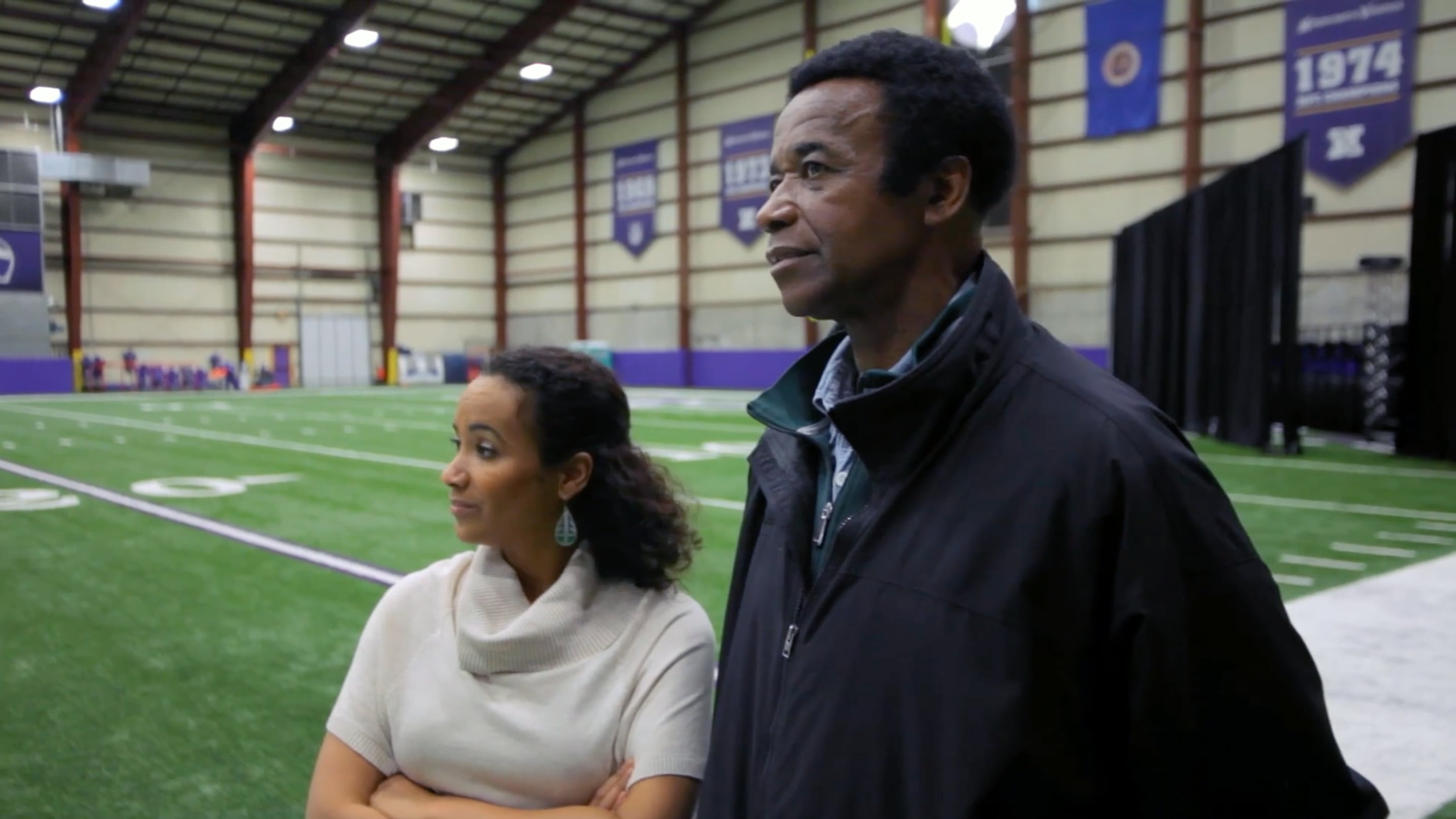In 2020, USC School of Dramatic Arts graduate Maya Washington premiered her documentary “Through the Banks of the Red Cedar,” a look into Michigan State’s first fully racially integrated college football program in 1963. But the end of this project left her with more questions than answers about the world of modern college athletics.
What started as a profile on college football’s history gave Washington first-hand experience into what the implications of name, image and likeness (NIL) are for former NCAA athletes.
In 2022, Washington was approached by actors preparing to audition for the role of her father and former Michigan State wide receiver, Gene Washington. She learned of a movie being made called “Black Spartans” that used her father’s name, image and likeness without his knowledge.
Upon further review, Washington found that the movie was based on a book published in 2018 by MSU Press titled “Duffy Daugherty: A Man Ahead of His Time.” Washington raised concerns to the university about the book over factual inaccuracies, plagiarism and likeness violations. MSU ceased publication of the book after a 2023 integrity review.
According to Washington, “Duffy Daugherty: A Man Ahead of His Time” remains available online and in libraries, and no public statement was ever made.
“Black Spartans” was never officially released to the public.
“It was a very agonizing four-year journey for us,” Washington said during her panel. “We never would have imagined that this would have been so much of a challenge.”
A judge allowed for the settlement of House v. NCAA, putting an end to three federal antitrust lawsuits that claimed the association was illegally limiting college athletes’ earning potential on June 6. The settlement included a $2.8 billion payout to athletes who competed in the pre-NIL era starting in 2016, but doesn’t stipulate any payments to legacy athletes before then according to court documents filed in the U.S. District Court of Northern California,
Daniel Durbin, a panel moderator and director of the Institute of Sports, Media and Society at USC Annenberg, noted how “the NCAA never had the power they thought they had.”
Since legacy athletes were never allowed to market their own image, many of these former players are still not aware of how universities are exploiting and profiting from them.
“These athletes did not know how powerful they were,” Durbin said.
In the years following NIL becoming a major discussion in the world of collegiate sports, the power of student-athletes has grown exponentially. Starting in 2021, players could begin to market themselves using their name and image, but the 2025 ruling allowed universities to pay players directly.
For example, USC is expected to spend over $15 million of its allotted $20.5 million of NIL money on football players, paying each class of 2026 recruit over $120,000, according to On3 NIL Valuations.
Although Washington understands that this type of monetary compensation for legacy athletes isn’t on the table right now, she believes these recent rulings are a step in the right direction.
“I think that the key is collaboration,” Washington said. “It’s in the best interests of colleges and universities to change things and to actually collaborate with their legacy athletes, because they carry the brand, they are your best ambassadors to share positive stories about their time at an institution.”
This market of legacy athletes is one that Washington believes many institutions have yet to tap into, and the struggle of these players to secure publicity rights hasn’t made headlines amidst the boom in NIL conversations.
Panel attendee Liam Ervin, a junior majoring in journalism, was unaware of stories like Gene Washington’s.
“For [legacy athletes] not to be compensated or awarded is obviously not okay, but it’s kind of the tricky right now between getting athletes what they need and then also funding the transfer portal,” Ervin said.
Although the current landscape of college sports post-NIL rulings is still in what Washington calls the “wild west,” she doesn’t think that means legacy athletes should be put on the back burner.
“If we can acknowledge that these [current] athletes’ contributions are worth compensation and acknowledge their right to pursue publicity, then you have to look back at those who built the brands, and look back at those who made it possible for them to get to where they are,” Washington said. “It would be in the university’s best interest to start having those conversations now to avoid negative publicity and a lot of pain for legacy athletes.”
This story has been updated to clarify that an integrity review was conducted of “Duffy Daugherty,” which led to its publication being ceased. MSU had no involvement with the production of “Black Spartans.”
